Keynote speakers at ISC 2016
| Messages | ||
| Shift scheduling via smartphone: Flexible working time design is still a key factor for manufacturing work – but in future it will be even more short-term than today. Ufuk Altun Institute for Applied Occupational Ergonomics and Industrial Engineering (ifaa) | 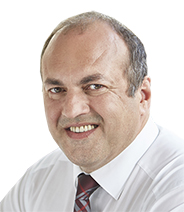
| |
| Enjoying a healthy life is a human right. Our work should contribute to improving the quality of our life and not be a cause for harmful lifestyles. Hence, promoting health in the world of work is part of a wider approach to manage occupational safety and health; it is not an accessory or add-on, it is primordial to a balanced living and efficient work. Azzi Manal International Labour Organisation (ILO) | 
| |
| Digitalization can make work safer and healthier but it is no cure-all for the problems of an ageing society. We need sound social security policies which ensure that everyone can benefit from comprehensive prevention and rehabilitation services. Joachim Breuer German Social Accident Insurance | 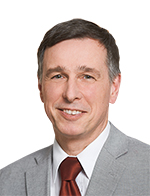
| |
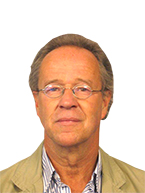
| It is crucial for Primary Health Care professionals to ask their patients: "Can your medical complaint have something to do with your work?" Peter Buijs International consultant "Primary Health Care & Work" | |
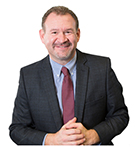
| Total Worker Health believes that jobs should be crafted to create wealth and health – both a living wage and positive health outcomes over time. Workers should not have to exchange their health for wages. L. Casey Chosewood National Institute for Occupational Safety and Health (NIOSH) | |
| It is well-known that men and women working in disadvantaged occupational positions are more likely to be in poor health, partly because they are more likely to be exposed to health-adverse working conditions. Therefore, improving working conditions among vulnerable subgroups of the workforce is essential for a “vision zero” in occupational health. Nico Dragano Heinrich-Heine-University Düsseldorf | 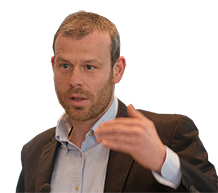
| |
| The crucial fields of action on the way to establishing a Prevention Culture are Leadership, Communication, Participation, Failure Management and Working Atmosphere! Walter Eichendorf Social Accident Insurance | 
| |
| VISION ZERO - Yes we can! Establishing the VISION ZERO prevention strategy is ambitioned. It requires true commitment and the collaboration of many stakeholders. Crucial for success will be committed CEOs, motivated managers and vigilant employees. It is all about showing that effective prevention is not only a social and humanitarian obligation, but also a reasonable investment in a future of decent work and a prerequisite for each business's success. I am convinced: VISION ZERO is possible. Yes we can! Helmut Ehnes German Social Accident Insurance Institution for the raw materials and chemical industry (BGRCI) | .jpg)
| |
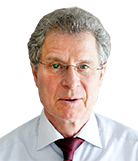
| Workers do not only need their body but also their brain: cognition should be considered in work design, personnel development and occupational health. Michael Falkenstein Institute for Work Learning Aging (ALA), Leibniz Research Centre for Working Environment and Human Factors (IfADo) | |
| Creating the TESLA moment of People centered prevention Heiko Fischer Resourceful Humans | 
| |
| If integrated into OSH Policies, workplace health promotion benefits both workers and employers. The SOLVE tool introduces an innovative approach whereby workers' health, safety and well-being become an integral part of organizational development, productivity and competitiveness contributing to the economic sustainability of the enterprise. Valentina Forastieri International Labour Organisation (ILO) | 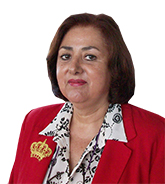
| |
| Talking about Vision Zero raises two main questions; How can we define what ‘good’ looks like and how will we position the organisation to achieve it? In an area where there is differing views on what good looks like and a lack of comprehensive steer on how organisations can equip themselves to achieve stretching vision zero targets it is imperative we find a more useful way to measure organisational competence. IOSH is committed to delivering mechanisms of measurement based on competency to enable organisations to achieve excellence in OSH. Shelley Frost Institution of Occupational Safety and Health (IOSH) | 
| |

| Modern work is knowledgable – in spite of digitalization of its algorithmic components. Knowledge management with an aging work force is more than knowledge transfer between and within generations, particularly since essential parts of action-regulating knowledge are tacit, i.e. not verbalized knowledge. The actual challenge is prospective job design with effortful opportunities to learn. Winfried Hacker Technical University Dresden | |
| Inspiring Vision Zero on Europe’s largest infrastructure project – Improving contractor health and safety performance through collaborative working and moving from the traditional means of measuring performance to an innovative mechanism which encourages the promotion of strong leading indicator performance. Steve Hails Crossrail Ltd. | 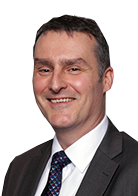
| |
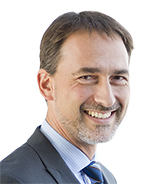
| The first step often sets the course: BASF started its journey of addressing mental stress with a practical and reasonably simple hazard assessment. This lead to optimized workflows and working conditions for BASF. Feedback shows that this approach reduces mental stress at the workplaces sustainably. Thomas Hill BASF | |

| Individualized working conditions characterized by a high degree of autonomy and individual flexibility, such as trust-based working time, are not health promoting per se. In order to enable the postulated positive effect on well-being, an appropriate cultural and organizational framework supporting and empowering the individuals and teams is indispensable. Sonia Hornberger AUDI AG, Germany | |

| Thinking about an aging society and an elder workforce could lead us to the misunderstanding, that risks in work and life are rising. But the opposite is the case: An elder society will be a more vital society, and vitality is the core of resilient work- and lifestyles. Matthias Horx Zukunftsinstitut GmbH | |
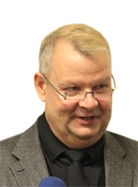
| Prevention of occupational diseases and injuries can only be effective if it is centered on the people in their work environment and personal needs. This means planning and implementing preventive programs around the needs of workers and not around the needs of the experts and service providers. This also means understanding the perception of risks by people at the workplace and empowering them to take active part in the assessment and prevention of these risks and in protecting and promoting their health, safety and wellbeing. Ivan Ivanov World Health Organization (WHO) | |
| The widely spread description of Industry 4.0 as “everything connected to everything” leads to new approaches of networked intelligences. However, the fourth industrial revolution is also characterized by a new type of artificial intelligence being capable of dealing in a “human-like complexity”. As the three industrial revolutions before this one, 4.0 is not only changing particular aspects of industry and production. Rather, it leads to societal changes in almost all fields. Sabina Jeschke, RWTH Aachen University | 
| |
| IOSH's No Time to Lose campaign aims to get the causes of occupational cancer more widely understood and help businesses take action. With lives being lost to occupational cancer every day, there really is no time to lose. We need action, and the time for action is now. Jill Joyce Institution of Occupational Safety and Health (IOSH) | 
| |
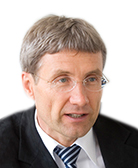
| Skin cancer, mainly to be attributed to occupational and recreational exposure to UV radiation alike, is one of the most commonly diagnosed cancers worldwide and represents a collective challenge for occupational safety and health and public health. Concerted action of many partners in prevention is needed to achieve meaningful results, including measures by individuals and employers to help minimize the risk. Swen Malte John EU-COST Action, Development and Implementation of European Standards on Prevention of Occupational Skin Diseases (StanDerm) | |
| A Vision Zero for the construction of an upcoming 18 km road and train tunnel link between Germany and Denmark includes ensuring effective leadership and planning, a high level of cooperation between all partners in supporting a culture of prevention, and ensuring worker well-being through effective living, health care and leisure facilities. Pete Kines National Research Centre for the Working Environment | 
| |
| Innovative technologies such as smart glasses and close human-robot interaction play an important role in the future world of work. The German Federal Institute for Occupational Safety and Health (BAuA) analyses chances and risks of these new technologies in the workplace. Britta Kirchhoff Federal Institute for Occupational Safety and Health | 
| |
| A people centric healthy culture is measurable and it is manageable. It has an impact on productivity and innovation and pays off on bottom line organizational performance metrics. Therefore putting people in the center is not only a matter of acting socially responsible it is also a business imperative. Natalie Lotzmann SAP SE, Germany | 
| |
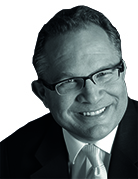
| A growing body of research is shifting the expectations of an ageing population, leading to calls for society and workplaces to embrace seasoned employees and the potential they offer. It is time to replace outdated models with ones that include all generations so as to improve the quality of work and life for all ages. Colin Milner International Council on Active Aging | |
| The sustainable development goals (SDG) will shape worlds’ agenda until 2030. For the first time, there are enormous opportunities for occupational health to contribute to achieving these goals. This needs intensive multisectoral collaboration and action oriented partnerships. Maria Neira World Health Organization (WHO) | 
| |
| Appreciation of temporary health-care workers and greater flexibility can sustainably improve health and safety in the workplace. In order to help both employers and employees in the health-care sector, Jobtour Medical uses a system of temporary employment to benefit individuals. Temporary assignments to different facilities and institutions increases job satisfaction, which in turn results in lower staff turnover. Private health insurance, dental insurance, individual coaching, comprehensive training and a strong sense of community means that the rate of sick leave is far below average. Mirjam Rienth, Jobtour GmbH & Co. KG | 
| |
| An integrated approach is required to address the impact of demographic change on Europe’s workplaces. In particular, there is a need to raise the awareness of employers, workers, human resources and health and safety professionals of the challenges faced and the solutions available to keep workers of all ages healthy and safe. Timothy Tregenza European Agency for Safety and Health at Work (EU OSHA) | 
| |
| Developments in the sector of Personal Protective Equipment do include smart systems. The equipment of the employee allows him/her to be better informed about the risks he/she encounters and at the same time provides added functionalities for monitoring his/her safety and health risks from a distance. Henk Vanhoutte, European Safety Federation | 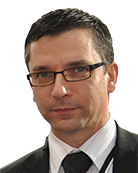
| |

| There is empirical evidence that leadership is related to employee well-being. Therefore, it is important to enable leaders to lead in a way that promotes health and well-being. The provision of job-related resources plays a central role in this context. Sylvie Vincent-Höper University of Hamburg | |
| Exposure data represent the fundamental starting point for prevention. GENESIS-UV serves as instrument for global measurement and data acquisition, and may also transport healthcare messages. Workers should not be in doubt about the hazards they are exposed to. Marc Wittlich Institute for Occupational Safety and Health of the German Social Accident Insurance (IFA) | 
| |
| Digitalisation creates new working models where previous standards on social security, working hours, place of work and OSH are no longer valid. Work-related mental illnesses resulting from constant availability could also increase. Against the backdrop of the digital single market and increased mobility, the protection of workers is of utmost importance. Ilka Wölfle, DGUV, German Social Insurance European Representation | 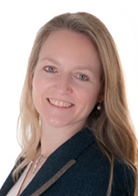
| |
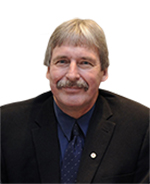
| Maintaining effective employment of individuals who have suffered a physical or mental health impairment represents a fiscal and social priority for employers and society at large.Achieving consistent improvements in Return-to-Work / Disability Management (RTW/DM) program outcomes requires 2 critical elements A) highly qualified professionals in the RTW/DM arena and B) the ability to accurately assess and benchmark current RTW/DM programs. Wolfgang Zimmermann National Institute of Disability Management and Research | |
| Vision zero starts with the intrinsic motivation of senior management to prevent all serious accidents and/or harm. It requires the integration of safety (or OSH) in the philosophy, strategies, technologies, culture etc. of the enterprise. It also requires an open-minded innovative approach to safety (OSH) whereby management and workers jointly co-create an on-going process of significant improvement. Gerard Zwetsloot, Research & Consultancy for a healthy, safe and responsible business | 
| |